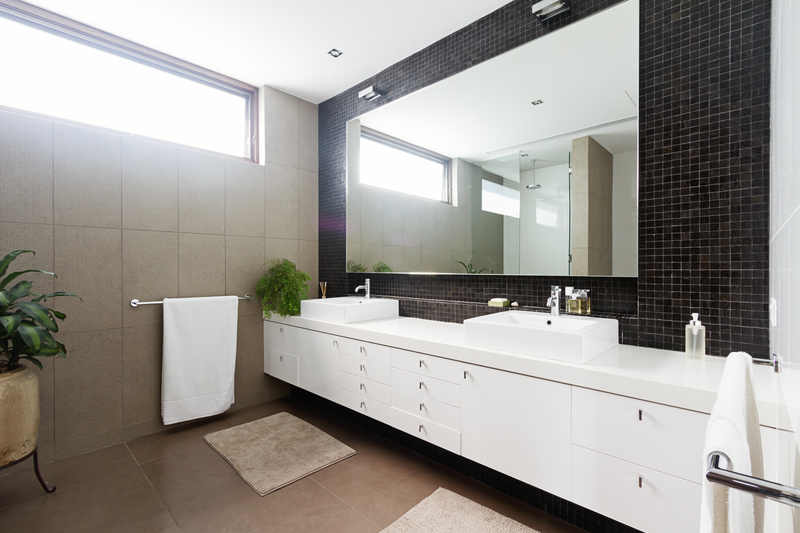Say No to Dampness: Odor Removal Tips
Posted on 18/08/2025
Say No to Dampness: Odor Removal Tips
Are musty smells taking over your living space? Is your home plagued by persistent, unpleasant odors from dampness? Damp environments are the main culprits when it comes to foul smells, which can jeopardize not just your comfort but also your health. In this comprehensive guide, we will walk you through expert tips for odor removal linked to dampness, ensuring your home smells fresh and inviting year-round.
Understanding the Source: What Causes Damp Odors?
Before diving into odor elimination strategies, it's crucial to understand the underlying causes of dampness and its associated smells. Damp odors are typically a sign that moisture is present in your home, leading to the growth of mold, mildew, and bacteria. This can happen for several reasons:
- Poor ventilation in bathrooms, basements, or kitchen areas
- Leaks in the roof, plumbing systems, or walls
- Condensation due to temperature differences
- Rising damp from ground moisture seeping into foundations
- Wet clothes or towels left unattended
Understanding the causes is the first step in saying 'No to Dampness' and ensuring efficient odor removal for a healthier environment.

Why It's Important to Remove Dampness Odors
Living with persistent damp smells affects more than just your quality of life. Here are key reasons why removing moisture-related odors should be a top priority:
- Health Risks: Damp conditions foster mold and mildew, which can aggravate allergies, asthma, and respiratory problems.
- Property Damage: Continuous dampness can damage walls, floors, furniture, and even the structure of your home.
- Unpleasant Atmosphere: Musty odors make your home feel unwelcoming and can be embarrassing when entertaining guests.
- Decreased Home Value: Persistent odor issues can lower the market value of your property.
With these stakes in mind, let's dive into actionable steps for removing damp odors and maintaining a fresh, pleasant home.
Top Odor Removal Tips to Combat Dampness
1. Identify and Eliminate the Source of Moisture
The most effective way to remove damp odors is to tackle moisture at its root. Here's how:
- Check for leaks: Inspect plumbing, roofs, and basement walls for leaks and repair them promptly.
- Improve ventilation: Use exhaust fans, and open windows regularly, especially in high-humidity areas.
- Address ground moisture: Install vapor barriers or improve drainage around your house foundation.
*Pro Tip:* Regular home maintenance prevents the buildup of moisture, eliminating musty odors before they start.
2. Use Dehumidifiers and Air Purifiers
Devices like dehumidifiers are essential in removing excess moisture from the air, preventing the growth of mold and mildew, and thus helping in eliminating damp smells. Additionally, air purifiers with activated carbon filters can trap odor particles and improve indoor air quality.
- Set up in damp-prone rooms: Especially basements, bathrooms, or laundry areas.
- Combine with good ventilation: For best results, use these devices alongside proactive airflow.
3. Absorb Moisture with Natural Solutions
If you prefer eco-friendly solutions, try these household items known for their ability to soak up moisture and odors:
- Baking Soda: Place open boxes in rooms, closets, or even shoes to absorb damp smells.
- Charcoal Briquettes: Activated charcoal is a powerful odor and moisture absorber.
- Salt: Bowls of salt can help dehumidify small spaces.
- Silica Gel Packs: Perfect for wardrobes and drawers to reduce mustiness.
4. Deep Clean and Disinfect Affected Areas
Cleaning surfaces affected by moisture is vital. Follow these steps to eliminate mold, mildew, and odors:
- Scrub with vinegar or hydrogen peroxide: These natural solutions kill mold and neutralize smells.
- Use mildew removers on tiles and grout: Pay special attention to bathrooms and kitchens.
- Clean fabrics and upholstery: Wash with hot water and add some vinegar for extra odor-fighting power.
5. Keep Fabrics Fresh
Fabrics, rugs, and upholstered furniture tend to trap dampness odors and need special care:
- Launder regularly: Wash curtains, cushion covers, and bed linens frequently.
- Sun-dry: Whenever possible, dry clothes and fabrics outdoors in direct sunlight - the sun kills odor-causing microbes.
- Use fabric refreshers: Products designed to neutralize odors in upholstery and drapes can help.
6. Maintain Proper Air Circulation
Improving air circulation goes a long way in eliminating damp smells:
- Keep interior doors open: Especially between rooms with varying humidity.
- Install ceiling or portable fans: These help disperse air and dry up damp spots.
- Use window screens: Keep windows open without letting in insects, allowing fresh air to flow.
7. Treat Carpets and Flooring
Carpets can absorb vast amounts of moisture and become a breeding ground for odors and bacteria:
- Vacuum regularly: Use a vacuum with a HEPA filter to remove dust, dirt, and mold spores.
- Shampoo carpets: Deep-clean using a mixture of warm water and vinegar or a dedicated carpet cleaner.
- Replace padding if necessary: Severely affected carpets may require completely new underlay to eradicate odors.
8. Prevent Future Dampness
Prevention is the best cure. To make sure musty odors and dampness don't return:
- Insulate pipes: Prevent condensation leaks by wrapping pipes with insulation.
- Check caulking and grout: Repair cracks around sinks, tubs, and tiles.
- Control household humidity: Ideally, keep it below 60% using dehumidifiers or exhaust fans.
- Store items off the ground: Keep stored goods raised in the basement or garage to prevent water damage.
DIY Odor Removers: Quick Home Remedies for Musty Smells
If you're seeking affordable and easy odor-removal tips for dampness, here are some DIY solutions that work wonders:
Baking Soda Freshener
- Fill a bowl with baking soda and keep it in the affected room or closet.
- Baking soda naturally absorbs odors and leaves the area smelling fresher within hours.
Vinegar Spray
- Mix equal parts vinegar and water in a spray bottle.
- Spritz onto musty-smelling surfaces, taking care with delicate fabrics.
- Allow to air dry; the vinegar smell dissipates as it dries, taking bad odors with it.
Lemon and Salt Scrub
- Combine lemon juice with coarse salt to scrub tiles, grout, and other hard surfaces prone to mildew.
- Lemon acts as a natural antibacterial agent, while salt adds gentle abrasiveness to tackle stains and smells.
Essential Oil Sachets
- Add a few drops of tea tree, lavender, or eucalyptus oil to cotton balls.
- Place them in damp-prone drawers, closets, or shoes to impart a clean, fresh scent and fight odor-causing microbes.
When to Call the Professionals
Sometimes, persistent dampness and serious odors signal a larger problem--like extensive mold growth or structural issues. If you notice the following, it's wise to contact a professional odor removal or water damage expert:
- Recurring musty smells despite cleaning and dehumidifying
- Visible black, green, or white mold patches
- Health symptoms like coughing, sneezing, or headaches worsen at home
- Structural damage to walls, ceilings, or floors
Professional teams use industrial-grade dehumidifiers, HEPA vacuums, and antimicrobial agents for thorough odor elimination and mold remediation.

Frequently Asked Questions About Damp Odors
Q1: What is the best way to remove a musty odor from a basement?
The key is to identify and fix any water leaks or seepage issues, use a dehumidifier to control humidity, and clean surfaces with vinegar or a commercial mildew remover. For persistent smells, consider professional basement waterproofing.
Q2: How do I prevent clothes from smelling musty in a damp room?
Always dry clothes completely before putting them away, use baking soda sachets in wardrobes, and ensure proper airflow in your storage spaces. Hanging moisture absorbers or using silica gel packs can also help.
Q3: Can air fresheners solve damp odors?
While air fresheners can mask musty odors temporarily, they won't solve the underlying moisture issue. Always address the source of the dampness for a permanent solution.
Q4: How can I tell if my home's odor problem is mold-related?
Musty, earthy smells are classic signs of mold. Look for visible patches of mold on walls, ceilings, or behind furniture. If in doubt, hire a professional for an air quality test or mold inspection.
Conclusion: Enjoy a Fresh, Odor-Free Home
Don't let musty, damp odors ruin the comfort of your living space. By understanding the causes, adopting effective odor removal techniques, and taking proactive steps to prevent future dampness, you can maintain a clean, inviting environment for your family and guests. Say no to dampness and embrace a lifestyle of freshness--your health, your home, and your peace of mind will thank you!
- Identify the source of moisture and fix it promptly.
- Apply proven deodorizing solutions like baking soda, vinegar, and air purifiers.
- Maintain regular cleaning and good ventilation to prevent future issues.
- If odors persist, don't hesitate to seek professional help.
Take a stand today. Say no to dampness with these comprehensive odor removal tips and transform your home into a space that's always fresh and welcoming.




